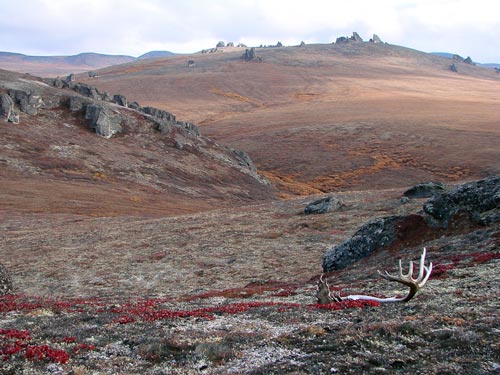Native Americans and the peoples of East Asia share features such as eye shape, hair form, details of tooth shape and significant parts of their DNA, so it has long been recognised that East Asia was probably the source of their ancestry. To reach the Americas, it is usually assumed that the first migrants travelled across the Bering Straits between Siberia and Alaska during the last cold stage, when sea levels would have been much lower, exposing a wide corridor of land, as well a chain of islands to the south. Moreover, it is also generally assumed that a significant constraint on this migration from Asia was the need for humans to adapt to sub-Arctic conditions before reaching far enough North to access either the Bering Strait land bridge or the islands immediately to the south. For a long time it was believed that the first Americans, making a distinctive stone tool industry called Clovis, entered the continent some 14,000 years ago. But there has been growing evidence from sites in North and South America that there was a definite pre-Clovis occupation of the Americas, putting human arrival back nearer 15,000 years ago, when the earliest colonizers could have moved rapidly down the west coast, with subsequent migrations inland.
However, a paper published in 2017 in the journal Nature by Steven Holen and colleagues suggests an even more radical rethink of the earliest human occupation of the Americas, putting its timing back by more than 100,000 years. If confirmed, these results might well mean that archaic people like the Denisovans or Neanderthals were the first colonisers of the Americas, rather than modern humans. The evidence is primarily based on broken mastodon bones excavated during the construction of a freeway in California. Many of the bones, tusks, and molars found at the site were sharply broken and alongside them were large stones which it is claimed had been used as hammers and anvils to smash them open. The researchers tested these claims by hitting large rocks onto modern elephant bones, demonstrating that they produced similar fracture patterns to those seen on the mastodon bones. The mastodon species is known to have become extinct about 11,000 years ago, which might have indicated that modern humans were responsible for the breakage of the bones. But the remains have been dated by a Uranium decay method to about 130,000 years old, suggesting that the tool-wielding humans more likely belonged to an archaic species such as the Neanderthals or Denisovans, known from southern Siberian sites about 100 -150,000 years old.
The critical questions that must be asked about these extraordinary claims include: have these mastodon remains really been butchered by humans when fresh, were there really associated stone cobbles collected and used by humans, and has the assemblage been properly dated to about 130,000 years old? High and concentrated forces were certainly needed to smash the thickest mastodon bones and without, say, the crushing action of a glacier, the slow-flowing river environment seemingly provides no obvious alternative to humans using the heavy cobbles found with the bones. As for the dating technique, the Uranium series method does not provide great accuracy when applied to bones, but it most often gives minimum ages rather than over-estimates.

So if the whole story does hold up, what would this mean for the earliest occupation of the Americas? On the previous assumption that passage to the Americas would have come from eastern Asia via the Bering Straits, entry would most likely have been accomplished during the lower sea levels of the cold stage that ended about 130,000 years ago, thus putting the actual migration at an even earlier date. At the moment there is no evidence that archaic humans ever had the adaptations to reach far enough North to access the Arctic routes to the Americas, and if these humans had really reached as far south as California 130,000 years ago, where else did they spread, and what happened to them afterwards? Many scientists will want to see supporting evidence of this ancient occupation from other sites, before they abandon the conventional model of a first arrival by modern humans within the last 15,000 years.
 Paleobiology
Paleobiology
Responses